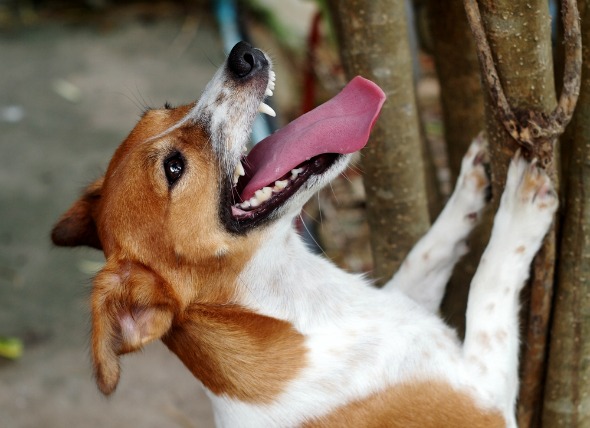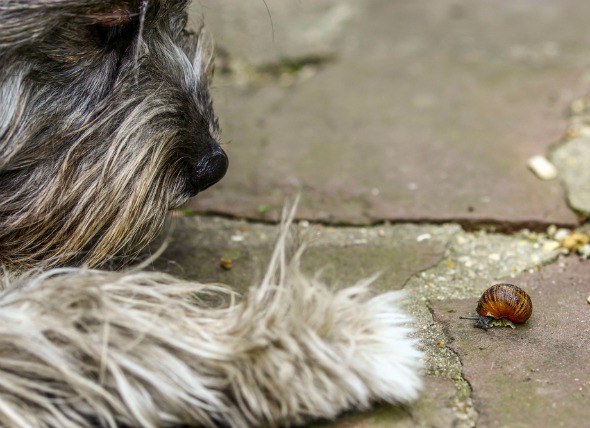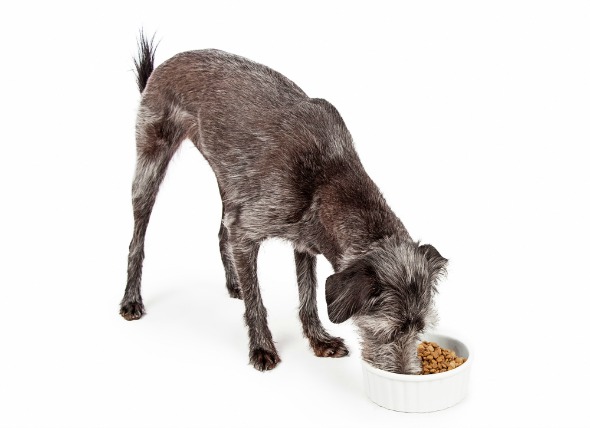
Chiari-like malformation is a disease in which one of the hollow spaces in the skull remains narrow or small and fails to grow in size. This causes the parts of the brain surrounding this area to be displaced into the opening at the base of skull through which spinal cord passes. Due to a protrusion of brain parts into this opening, the normal flow of cerebrospinal fluid (CSF) is obstructed.
One of the consequences of this obstruction is a disorder called syringomyelia, the development of fluid-filled cavities, or cysts, within the spinal cord. These disorders may develop due to underlying health problems, but they have also been found to hereditary links in some breeds. Toy breeds including the Cavalier King Charles Spaniels, King Charles Spaniels, and Brussel Griffons are at an increased risk for developing this condition. This condition has also been reported in Staffordshire bull terriers.
Although syringomyelia is typically inherited, it can also develop in conjunction with conditions that lead to cerebrospinal fluid (CSF) flow obstructions, such as tumors.
Your veterinarian will conduct a complete physical examination after taking a detailed background and medical history from you. You will need to give your veterinarian a detailed description of the onset of your dog's symptoms, and the types of symptoms your dog has been experiencing. The more information your doctor has from the start, the quicker treatment can begin. And because this is a serious condition that requires immediate treatment, you will need to be as conscious of details as possible.
The results of the routine laboratory results, including the complete blood count, biochemistry profile, electrolytes, and urinalysis are often found normal in affected patients. Because of the location of the pain, diagnostic imaging will be necessary. X-rays of the brain skull may show abnormalities related to this condition, but magnetic resonance imaging (MRI) is the imaging tool of choice for a confirmatory diagnosis, since it gives a much clearer image of the interior of the skull. The results of the MRI may show an abnormal protrusion of brain parts into the passage of the spinal cord and other related abnormalities, or may show the presence of a cyst or tumor.
Your veterinarian may also take a sample from the cerebrospinal fluid that baths the brain and spinal cord in order to test the pressure of the fluid.
The initial goal of treatment is to begin by relieving the pain. Based on your dog's age, and underlying health condition, your veterinarian will give your dog medications to reduce the pain that is associated with this disease. Surgery is the only treatment available for a resolution, but the success rate is not more than 50 percent. Surgery can often be performed to re-establish the pathway for normal CSF movement into the spinal cord. Acupuncture has also been found helpful in reducing the pain in affected patients. In patients with seizures, medications can usually be given to control the seizures.
The overall prognosis of this disease is highly variable. Some patients may live for years without complications, while others may become disabled by the pain and other symptoms that are associated with this disease. In some cases, disability may occur within a matter of a few months.
Good home nursing care is important for dogs with syringmyelia and/or chiari malformationin. While your dog is recovering, you may need to avoid grooming, such as brushing and vigorous bathing, due to the pain and sensitivity that is associated with this disease.
Your veterinarian will advise you regarding the proper care for your dog, including appropriate feeding practices and ways by which you can try to minimize your dog's pain. Regular check-ups are required to monitor the pain and neurological status of your dog and to adjust medications and therapy as needed.
 Plague in Dogs
Yersinia pestis in Dogs
Plague is a bacterial dis
Plague in Dogs
Yersinia pestis in Dogs
Plague is a bacterial dis
 Seizures and Convulsions in Dogs
Status Epilepticus in Dogs
Status epilepticus, or
Seizures and Convulsions in Dogs
Status Epilepticus in Dogs
Status epilepticus, or
 Snail, Slug Bait Poisoning in Dogs
Metaldehyde Poisoning in Dogs
Metaldehyde -- an i
Snail, Slug Bait Poisoning in Dogs
Metaldehyde Poisoning in Dogs
Metaldehyde -- an i
 Increased Appetite in Dogs
Polyphagia in Dogs
When a dog increases its food
Increased Appetite in Dogs
Polyphagia in Dogs
When a dog increases its food
 Enlarged Heart (Dilated Cardiomyopathy) in Dogs
Heart Muscle Disease in Dogs
Dilated cardi
Enlarged Heart (Dilated Cardiomyopathy) in Dogs
Heart Muscle Disease in Dogs
Dilated cardi
Copyright © 2005-2016 Pet Information All Rights Reserved
Contact us: www162date@outlook.com